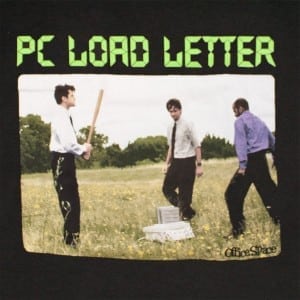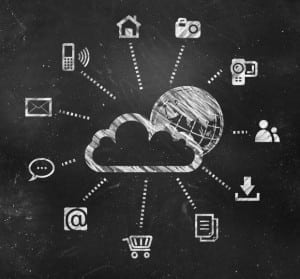 We hear about “assets” all the time, in business. But, what the heck are they…and why do they matter?
We hear about “assets” all the time, in business. But, what the heck are they…and why do they matter?
Well, first off, we’re not talking about “current” assets (like cash or inventory), or “long-term assets” (like your laptop or filing cabinets). On the contrary, we’re talking about more intangible assets—marketing assets and more.
So, let’s start with a good old-fashioned definition from BusinessDictonary.com: An “asset” is anything that, “an entity owns, benefits from, or has use of, in generating income.”
 Assets can come as physical items on your balance sheets, or in new, modern ways. If you have a website that you’re not constantly loading fresh content into, for example, it will simply begin to depreciate…just like that stupid PC-Load-Letter-error-message-riddled printer you’re still keeping on your balance sheet.
Assets can come as physical items on your balance sheets, or in new, modern ways. If you have a website that you’re not constantly loading fresh content into, for example, it will simply begin to depreciate…just like that stupid PC-Load-Letter-error-message-riddled printer you’re still keeping on your balance sheet.
Let’s just look at eight different, possible types of marketing assets, and which ones might be important to you:
1.) Written Assets – Copy-related assets include all of the persuasive content, sales information, web copy, blogs, and written materials that you use to market your products, inform the public (like press releases), relate your brand to the marketplace, and describe who you are and what you do.
2.) Photographic Assets – These types of assets include the visuals that accompany copywriting and images. This can encompass anything, from staff photos to product shots to candids from your cell phone (e.g. lifestyle photos and casual pics).
3.) Video Assets – AV assets include commercials, of course, but also extend to customer service videos, How To videos, YouTube clips, clogs, product videos, and promotional files. Do yourself a favor and separate raw footage and B-roll (shots that set the scene for the story you’re trying to tell) from your final files.
4.) Marketing Assets – Anything, from PDF versions of print collateral to one-page fact sheets about your products, would all be included here. Brochures and catalogues are just a couple of examples.
 5.) Social Assets – Your Tweets, your Facebook posts, your Instagram insights—everything that you use to connect what you do to the outside world—all builds engagement, trust, and loyalty. Don’t forget about user-generated content; anything that your customers write (or photograph) about you or your products (including reviews, rants, and raves) can be studied and repurposed.
5.) Social Assets – Your Tweets, your Facebook posts, your Instagram insights—everything that you use to connect what you do to the outside world—all builds engagement, trust, and loyalty. Don’t forget about user-generated content; anything that your customers write (or photograph) about you or your products (including reviews, rants, and raves) can be studied and repurposed.
6.) Graphic Assets – This comprises everything from your company logos and infographics to charts and other data-related materials and graphs. This also includes logos in vector formats (so they can be resized without becoming fuzzy), as well as web-ready graphic-formatted files (like transparent background PNGs and JPGs).
7.) Ecommerce Assets – This type of asset lives in its own world, consisting of mainly of spreadsheets to track all things product-related, from item names and numbers to short and long product descriptions. All of that crucial information, kept in manageable documents (along with standardized photos and uniform backgrounds) makes up the majority of ecommerce assets.
8.) Customer Testimonials – Though this may not seem like the others, this is one of the most important assets you have. Shoppers are more persuaded by other customers’ testimonials—which also includes product reviews—than by any other marketing message. According to a study by Dimensional Research, a whopping 90 percent of respondents said that positive online reviews influenced their buying decisions. Great reviews make for great testimonials, while negative feedback sorts out the issues that aren’t working, and makes your process better overall…that is, of course, if you’re consistently listening and refining.
Once you have a fair grasp of which assets you hold in each of these areas, you will be able to see the widescreen view of where your company has been, and where it’s going next. Make a commitment to establishing a set of standards when it comes to how you identify and manage your intangible assets.

You need to have storage space (lots of it, probably, if you use video)—whether in hard drives, in the cloud, or at an off-site facility. Files must be named clearly, filed logically, and organized. This is especially important as you add new content.
Your staff will need to be able to access files easily…but don’t just give away the keys to the kingdom. Be selective about who can see and use your assets, or they might “go missing”—just like that box of highlighters you can’t find.
So, how is a logo different from a lawnmower? Well, in terms of value, it’s not. If identified and managed correctly, any type of asset can become a life beacon for your business. You just have to notice them!
Communications materials and websites need constant care and feeding. They basically eat assets, and need a fair amount of digital attention to keep people noticing them.
The idea here is really to expand your perception of what an asset is and can be, and figure out new and innovative ways to function in an asset-gathering mode all the time, especially among people making contact with customers, interacting with them, or processing consumer feedback.
Today’s assets are not just on your balance sheet. They are deemed to have real value to your business and, if you can be aware of them, and gather them, you will boost your balance sheet automatically.
So, what’s your company’s most valuable “intangible” asset? I want to know! Comment below!



